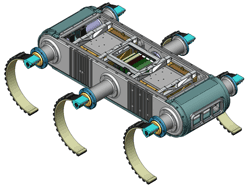 Imagine descending to the bottom of a pitch black mine, or crashing through a wintry ocean to an iceberg to take measurements of a particular environment. Not too pleasant for the most hardy of creatures, not even robots.
Imagine descending to the bottom of a pitch black mine, or crashing through a wintry ocean to an iceberg to take measurements of a particular environment. Not too pleasant for the most hardy of creatures, not even robots.
An announcement by Gary Goodyear, Minister of State (Science and Technology) will bring $5 million to support the newly formed NSERC Canadian Field Robotics Network. This network aims to build on existent robotics systems to create advanced machines that can work in extreme conditions and that can ‘talk’ to each other to share data.
To properly monitor a coastline or to track iceberg movement, for example, a water robotic tool would need be able to function in frigid temperatures, and, to make the best use of the information it collects, that robot should be able to communicate with machines on land and in the air.
McGill University Computer Science professor Gregory Dudek leads the Canadian Field Robotics Network and has high hopes for the program. “We have created a very ambitious program for ourselves, but this group combines the best people working in field robotics… I’ve no doubt that we will be able to work together to build a suite of shared tools to bring new concepts and technologies to fruition.”
